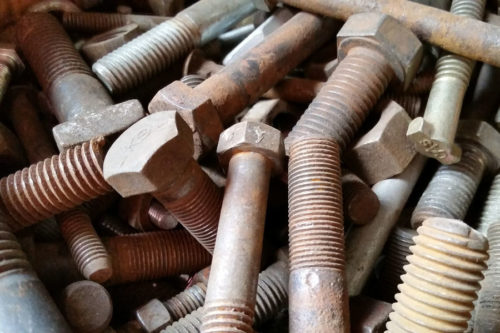As component stock holders; we have to ensure that your parts are maintained and kept in a sellable condition at all times.
Rust can become a big and costly problem and, if parts are not treated or stored correctly, it can lead to scrapping high volumes of component parts.
We can offer many solutions on how to treat and store your parts correctly, so they last for as long as possible on the shelf.

Selecting the Correct Material
This may seem like an obvious solution, but different metals have different properties which impact the rate of corrosion. Alloys, such as stainless steel, offer a longer-term option to rust prevention without the need for any further treatments. However, these materials are often more costly so it becomes an economical question on whether it is worth the extra cost.
Correct Storage
As it is moisture which causes rust, the simplest solution is to take away as much moisture as possible when storing the components. As all air particles contain moisture in the form of humidity, it is impossible to completely remove this; but using air-tight containers and
Use of Rust Inhibitors/Oils
We coat mild steel parts in Duck Oil, a rust inhibitor which acts as a barrier so any moisture (which is the cause of corrosion) cannot get to the metal and cause it to rust. It also lubricates the parts so reduces friction during transport; which should also protect the parts from scratching and damage.
Painting/Powder Coating
Applying paint, or a layer of powder coating, also adds a protective barrier so that moisture cannot physically touch the metal, limiting the chance of corrosion. Aesthetically, this also allows the parts to be coloured to any desired finish.
Plating/Galvanising
Applying a protective coating of zinc over the raw material which improve the corrosion resistance of the component. Since zinc corrodes about 30 times slower than iron, galvanizing or zinc plating can be a cheap and effective way to prevent rust.

